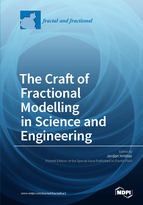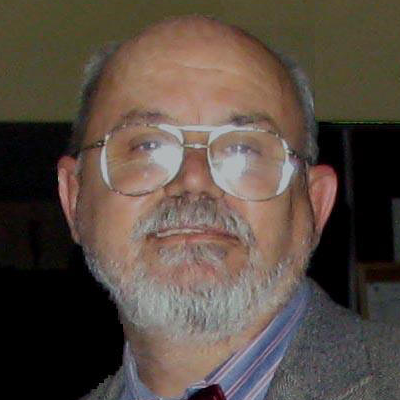The Craft of Fractional Modelling in Science and Engineering
A special issue of Fractal and Fractional (ISSN 2504-3110).
Deadline for manuscript submissions: closed (31 December 2017) | Viewed by 39913
Special Issue Editor
Interests: mathematical modeling; fractional calculus; non-linear diffusion; viscoelasticity
Special Issues, Collections and Topics in MDPI journals
Special Issue Information
Dear Colleagues,
Fractional calculus performs an important role in the fields of mathematics, physics, electronics, mechanics, and engineering in recent years. The modelling methods involving fractional operators are continuously generalized and enhanced especially during the last few decades. Many operations in physics and engineering can be defined accurately by using systems of differential equations containing different type of fractional derivatives.
The goal of this Special Issue is to report latest progress is to present craft of fractional modelling in science and engineering. We, therefore, invite researchers working within field of theory, methods and application of these problems to submit their latest findings in this Special Issue.
The best articles from the collection will be selected by the Guest Editor and the Editorial Board and published as a book.
The main topics of the collections include, but are not limited to:
- Fractional modelling: a broad aspects
- Solution techniques: analytical and numerical
- Memory kernels: identification, construction and definitions of new fractional operators
- Diffusion models
- Local fractional calculus
- Discrete fractional calculus
- Heat, mass and momentum transfer (fluid dynamics) with relaxations
- Mechanics and rheology of solid materials
- Nano-applications of fractional modelling
- Biomechanical and Biomedical applications of fractional calculus
- Chaos and complexity
- Thermodynamic compatibility of fractional models
- Control problems and model identifications with fractional operators
- Electrochemical systems and alternative energy sources
- Electromagnetics
- Fractional electric circuits
Prof. Dr. Jordan Hristov
Guest Editor
Manuscript Submission Information
Manuscripts should be submitted online at www.mdpi.com by registering and logging in to this website. Once you are registered, click here to go to the submission form. Manuscripts can be submitted until the deadline. All submissions that pass pre-check are peer-reviewed. Accepted papers will be published continuously in the journal (as soon as accepted) and will be listed together on the special issue website. Research articles, review articles as well as short communications are invited. For planned papers, a title and short abstract (about 100 words) can be sent to the Editorial Office for announcement on this website.
Submitted manuscripts should not have been published previously, nor be under consideration for publication elsewhere (except conference proceedings papers). All manuscripts are thoroughly refereed through a single-blind peer-review process. A guide for authors and other relevant information for submission of manuscripts is available on the Instructions for Authors page. Fractal and Fractional is an international peer-reviewed open access monthly journal published by MDPI.
Please visit the Instructions for Authors page before submitting a manuscript. The Article Processing Charge (APC) for publication in this open access journal is 2700 CHF (Swiss Francs). Submitted papers should be well formatted and use good English. Authors may use MDPI's English editing service prior to publication or during author revisions.
Keywords
- fractional modelling
- applied models
- solution techniques
- memory kernels
- fractional operator definitions
- biomechanical and medical applications
- control and identification
- local fractional calculus
- discrete fractional calculus
- electrochemical systems






